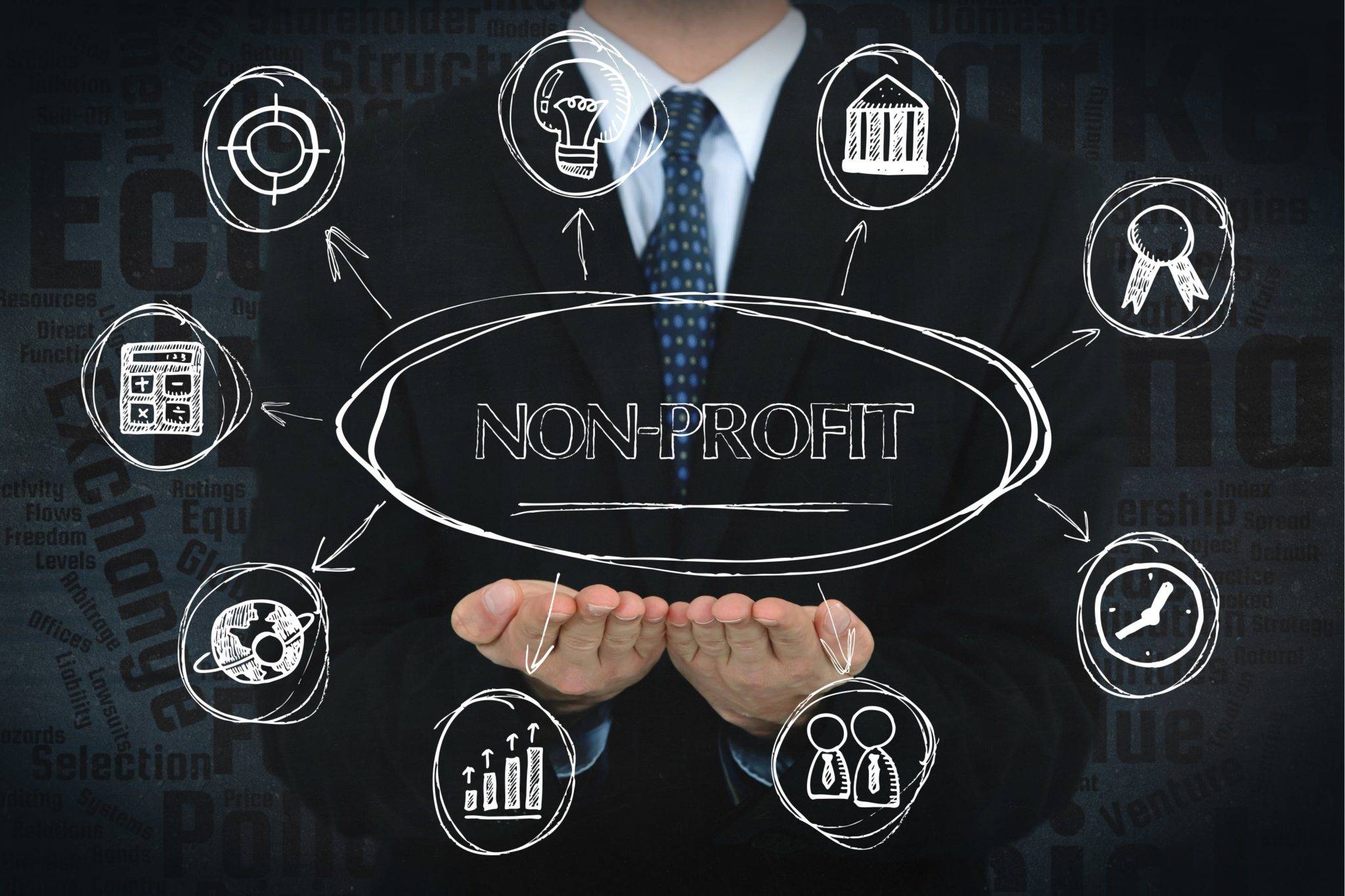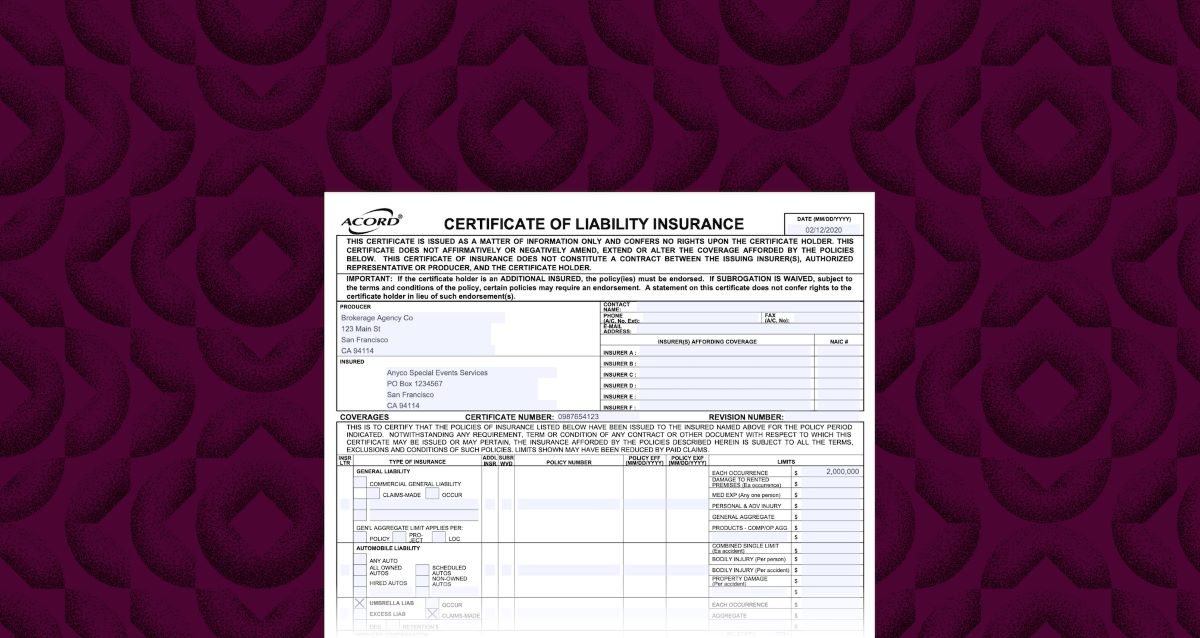

Finance
What Is SGA In Accounting
Modified: March 1, 2024
Learn all about SGA in accounting and its importance in finance. Understand how it affects a company's profitability and cost management strategies.
(Many of the links in this article redirect to a specific reviewed product. Your purchase of these products through affiliate links helps to generate commission for LiveWell, at no extra cost. Learn more)
Table of Contents
Introduction
When it comes to accounting, it is essential to have a thorough understanding of various terms and concepts that play a crucial role in financial management. One such term is SGA, which stands for Selling, General, and Administrative expenses. SGA expenses are a significant component of a company’s overall operating expenses, and understanding them is vital for effective financial planning and decision-making.
In simple terms, SGA expenses represent the costs incurred by a business in its day-to-day operations, excluding the costs directly associated with producing goods or services. These expenses encompass a wide range of activities, including sales and marketing, administrative functions, and general operating costs.
As an organization strives to achieve profitability and sustainable growth, managing SGA expenses becomes a critical aspect of financial management. By analyzing and tracking these expenses, businesses can identify areas of inefficiency and work towards optimizing their operations to improve their bottom line.
In this article, we will delve deeper into the definition of SGA in accounting, explore its components and examples, discuss the importance of tracking SGA, and explore strategies for managing SGA expenses effectively. Additionally, we will also examine the impact of SGA expenses on a company’s financial statements and overall business performance.
Definition of SGA in Accounting
Selling, General, and Administrative expenses (SGA) are a category of operating expenses incurred by a company in the course of its daily operations. This classification includes expenses related to sales, marketing, administrative functions, and general operating costs that are not directly involved in the production of goods or services. SGA expenses are typically seen on the income statement as a line item separate from the cost of goods sold (COGS).
The SGA category is further divided into three main components:
- Selling expenses: These are costs directly associated with the sales function of a business. They include activities such as advertising, sales commissions, customer service, marketing materials, and promotional events.
- General expenses: This component encompasses the general overhead costs of running a business. It includes expenses such as rent, utilities, office supplies, insurance, salaries of non-sales personnel, and other general administrative costs.
- Administrative expenses: These expenses are specifically related to the administrative functions of a business. They include costs incurred for accounting, legal services, human resources, IT infrastructure, and other administrative activities necessary to support the organization.
It is important to note that SGA expenses are typically considered indirect costs because they are not directly tied to the production or manufacturing process. Instead, they are incurred to support the overall operations and facilitate revenue generation.
The separation of SGA expenses from COGS is crucial for financial analysis. While COGS represents the direct costs of producing goods or services, SGA expenses focus on the costs incurred to sell and administer those products or services. Separating these expenses provides a clearer picture of the different cost components and enables businesses to evaluate their financial performance more accurately.
Components of SGA
Selling, General, and Administrative expenses (SGA) consist of various components that reflect the different areas of a company’s operations. Understanding the components of SGA is crucial for businesses to identify and categorize their expenses accurately. Let’s take a closer look at the key components of SGA:
- Selling Expenses: Selling expenses are directly related to the sales function of a business. These expenses are incurred to promote products or services, attract customers, and generate sales. Typical selling expenses include advertising costs, sales commissions or incentives, marketing materials, trade show participation fees, and sales-related travel expenses.
- General Expenses: General expenses encompass the overhead costs necessary to keep a business operating smoothly. This category includes expenses such as office rent, utilities, insurance, office supplies, maintenance and repairs, and other general administrative costs. These expenses are not directly tied to a specific department or function but are essential for running the business efficiently.
- Administrative Expenses: This component of SGA includes expenses incurred for administrative functions that support the overall operations of a business. Administrative expenses typically include salaries and benefits of administrative staff, office equipment and software costs, legal and professional fees, IT infrastructure costs, and other expenses associated with managing the administrative aspects of the organization.
- Depreciation and Amortization: While not directly part of the S in SGA, depreciation and amortization are commonly included under the administrative expenses category. These expenses account for the decrease in value of fixed assets (depreciation) and the gradual reduction in the value of intangible assets (amortization) over time. Including depreciation and amortization helps businesses allocate the costs associated with these assets accurately.
- Other Indirect Expenses: SGA may also include other indirect expenses that are not specifically categorized under selling, general, or administrative costs. These expenses may vary depending on the nature of the business and can include items such as research and development, training and development costs, or any other indirect costs necessary for the operation of the business.
By breaking down SGA into its components, businesses can identify areas where they can optimize expenses, reduce inefficiencies, and allocate resources effectively. This level of granularity allows management to make informed decisions about cost control, resource allocation, and overall financial planning.
Examples of SGA Expenses
Selling, General, and Administrative (SGA) expenses encompass a wide range of costs incurred by a company to facilitate its daily operations. Understanding the different types of SGA expenses can provide insights into the various areas where businesses allocate their resources. Here are some examples of common SGA expenses:
- Advertising and Marketing Costs: This includes expenses related to advertising campaigns, digital marketing efforts, print advertisements, television and radio commercials, social media marketing, and other promotional activities aimed at attracting customers and driving sales.
- Employee Salaries and Benefits: This category comprises the wages, salaries, commissions, bonuses, and benefits paid to employees who are not directly involved in the production process. It includes salaries of sales representatives, administrative staff, marketing personnel, and other non-production employees.
- Rent and Utilities: Businesses incur expenses for renting office spaces, retail locations, or warehouses. Additionally, utilities such as electricity, water, heating, and internet services are considered part of SGA expenses.
- Office Supplies and Equipment: This includes the costs associated with purchasing office supplies, computers, printers, software licenses, furniture, and other equipment necessary for day-to-day operations.
- Travel and Entertainment: When sales representatives or employees travel for business purposes, expenses related to transportation, accommodation, meals, and client entertainment are considered SGA expenses.
- Legal and Professional Fees: Businesses often require legal advice, accounting services, and other professional services for compliance, tax matters, financial reporting, or consulting. These fees are considered part of the administrative expenses.
- Insurance Premiums: Businesses need insurance coverage to protect their assets, liability, and operations. Premiums paid for general liability insurance, property insurance, professional liability insurance, and other forms of coverage are considered part of SGA expenses.
- Training and Development Costs: Organizations invest in training programs and development initiatives for their employees to enhance their skills, improve productivity, and stay competitive in the market. These costs are classified as administrative expenses.
- Information Technology Expenses: This includes costs associated with the purchase and maintenance of hardware, software licenses, IT infrastructure, cybersecurity measures, and other technology-related expenditures necessary for the organization’s operations.
- Utilities and Maintenance: Expenses incurred for utilities such as electricity, water, and gas, as well as maintenance and repairs for office spaces, equipment, and other facilities, are considered part of SGA expenses.
These examples demonstrate the wide variety of expenses that fall under the SGA category. By tracking and analyzing these expenses, businesses can gain insights into their expenditure patterns, identify areas for cost optimization, and allocate resources effectively to support their overall operations.
Importance of Tracking SGA
Tracking Selling, General, and Administrative expenses (SGA) is vital for businesses as it allows them to monitor and manage their operating costs effectively. Here are some key reasons why tracking SGA is important:
- Expense Control: Monitoring SGA expenses helps businesses identify areas of inefficiency and control costs. By analyzing these expenses, companies can find opportunities to streamline operations, negotiate better vendor contracts, or implement cost-saving measures to reduce overall expenses and improve profitability.
- Financial Planning and Budgeting: Understanding the breakdown of SGA expenses enables businesses to create accurate financial forecasts and budgets. By incorporating historical expenses and anticipated changes, companies can set realistic financial targets and allocate resources effectively to support their growth strategies.
- Identifying Cost Drivers: Tracking SGA expenses allows businesses to identify the primary cost drivers within the organization. By understanding which activities and functions contribute the most to the overall expenses, companies can prioritize resource allocation and implement strategies to optimize those areas, potentially improving operational efficiency.
- Performance Evaluation: Analyzing SGA expenses helps management evaluate the performance of different business units or departments. By comparing SGA expenses across departments, companies can identify high-performing areas and areas that may require improvement or further investment. This analysis provides insights into the efficiency and effectiveness of different functions within the organization.
- Decision-Making: Accurate tracking of SGA expenses provides management with the necessary information to make informed decisions. Whether it’s evaluating the feasibility of a new marketing campaign, deciding on cost-cutting measures, or assessing the impact of expanding operations, having a clear understanding of SGA expenses helps in making strategic and financially sound decisions.
- Benchmarking: Comparing SGA expenses with industry benchmarks and competitors’ performance can provide valuable insights. It allows businesses to evaluate their cost structure compared to industry standards and identify areas where they may be over or underinvesting. Benchmarking performance against competitors can also help identify opportunities for improvement and gain a competitive edge.
By tracking SGA expenses and leveraging the insights gained, businesses can optimize their operations, enhance financial performance, and make informed decisions that align with their strategic objectives. It enables them to have better control over their costs, improve resource allocation, and ultimately drive business success.
Calculation of SGA
The calculation of Selling, General, and Administrative expenses (SGA) involves aggregating the various costs incurred by a company in its day-to-day operations. While the specific methods and items included may vary between businesses, the general principle remains the same. Here are the key steps involved in calculating SGA:
- Gather Expense Data: Collect all relevant financial records and expense documents, such as receipts, invoices, payroll records, and utility bills, for the defined period of analysis. Ensure that all expenses related to selling, general, and administrative functions are included.
- Categorize Expenses: Categorize each expense into the relevant component of SGA – selling expenses, general expenses, administrative expenses, or other indirect expenses. This categorization helps provide clarity and a more accurate representation of the different elements that contribute to SGA expenses.
- Total SGA Expenses: Sum up the expenses within each category to calculate the total SGA expenses. Depending on the complexity of the business and the level of detail desired, you may choose to analyze SGA expenses for a specific period, such as a month, quarter, or fiscal year.
- Optional: Exclude COGS: If available, subtract the cost of goods sold (COGS) from the total expenses to arrive at the net SGA expenses. This separation allows for a clearer understanding of the costs directly associated with production versus those associated with selling, general, and administrative functions.
- Review and Analyze: Once the SGA expenses are calculated, review and analyze the data to gain insights. Compare the results with historical records, industry benchmarks, and set financial targets to determine the efficiency and effectiveness of the business’s operations.
It’s important to note that the accuracy and completeness of expense data collected play a crucial role in the calculation of SGA. Therefore, it is essential to maintain well-organized financial records and implement effective expense tracking systems to ensure all relevant costs are captured.
Additionally, businesses may need to make adjustments or allocations for shared expenses that benefit multiple departments or functions. These allocations can be based on various factors such as revenue generation or headcount, ensuring a fair distribution of expenses.
By calculating SGA, businesses can gain a comprehensive understanding of their operating costs and use this information to evaluate financial performance, set budgets, and make informed decisions to optimize expenses and improve overall profitability.
SGA vs COGS
When analyzing a company’s financial statements, it is important to understand the distinction between Selling, General, and Administrative expenses (SGA) and the cost of goods sold (COGS). Both SGA and COGS are key components of the income statement, but they represent different types of expenses. Here’s a breakdown of the difference between SGA and COGS:
Selling, General, and Administrative Expenses (SGA):
SGA expenses refer to the costs incurred by a company in its day-to-day operations, excluding the direct costs associated with producing goods or services. SGA includes expenses related to sales, marketing, administrative functions, and general operational costs. Examples of SGA expenses include advertising, employee salaries, rent, utilities, office supplies, travel expenses, and insurance premiums. SGA expenses are considered indirect costs as they are not directly tied to the production process.
Cost of Goods Sold (COGS):
COGS represents the direct costs associated with producing or purchasing the goods or services that a company sells. It includes expenses such as raw materials, labor costs directly involved in production, manufacturing overheads, and direct production-related expenses. COGS is calculated by subtracting the ending inventory value from the sum of the opening inventory value and the purchases made during a specific period. The resulting value reflects the cost of the goods or services that have been sold during that period.
The key distinction between SGA and COGS is that SGA accounts for the expenses incurred in the selling, administrative, and general operating functions of a business, whereas COGS specifically focuses on the direct costs associated with producing goods or services. SGA expenses are independent of the level of production or sales, while COGS is directly proportional to the volume of goods produced or sold.
From a financial standpoint, understanding the difference between SGA and COGS is essential for accurate analysis and decision-making. By separating these expenses, businesses can evaluate their operational efficiency, assess the profitability of their products or services, and make informed cost management decisions. It provides insights into the overall cost structure of the business and helps identify areas for potential cost optimization and revenue growth.
SGA Management Strategies
Effectively managing Selling, General, and Administrative expenses (SGA) is crucial for businesses looking to optimize their operations and improve financial performance. Implementing strategic approaches to manage SGA can help control costs, increase efficiency, and enhance profitability. Here are some key strategies for managing SGA:
- Continuous Expense Monitoring: Regularly review and analyze SGA expenses to identify areas of inefficiency or excessive spending. Monitor expense trends, compare them to industry benchmarks, and set goals for cost reduction.
- Implement Cost Control Measures: Identify cost-saving opportunities and implement measures to control and reduce expenses. This can include renegotiating contracts with vendors, finding cost-effective alternatives for supplies or services, implementing energy-saving initiatives, or optimizing inventory management to reduce carrying costs.
- Streamline Processes: Identify and eliminate redundant or inefficient processes that contribute to unnecessary SGA expenses. Streamlining operations can involve automating manual tasks, improving workflow management, or implementing digital solutions to reduce paperwork and administrative overhead.
- Invest in Technology: Embrace technology solutions to optimize SGA processes and enhance productivity. This can include adopting cloud-based software for accounting, customer relationship management (CRM), or project management, enabling remote work capabilities, and leveraging data analytics tools to gain insights into SGA expenses and identify opportunities for improvement.
- Employee Training and Development: Invest in training programs to equip employees with the necessary skills and knowledge to perform their roles more efficiently. Improved skills can lead to increased productivity, enhanced customer service, and reduced errors, ultimately contributing to lower SGA expenses.
- Implement Performance Metrics: Define and monitor key performance indicators (KPIs) related to SGA expenses. This allows for ongoing tracking of important metrics such as SGA as a percentage of revenue, cost per customer acquisition, or cost per unit produced. Regularly analyzing these metrics can help identify areas for improvement and measure the effectiveness of cost management strategies.
- Cross-department Collaboration: Foster collaboration among departments to identify ways to streamline processes, share resources, and reduce duplication of efforts. By breaking down silos and promoting communication, businesses can identify opportunities for cost synergies and optimize SGA across the entire organization.
- Regular Benchmarking: Continuously benchmark SGA expenses against industry peers and competitors to identify areas for improvement. By comparing performance against industry standards, businesses can pinpoint areas where they may be over-spending and implement strategies to achieve higher efficiency and cost optimization.
Implementing these SGA management strategies requires a proactive and data-driven approach. Regular monitoring, analysis, and adjustment of SGA expense management initiatives can result in improved operational efficiencies, reduced costs, and increased profitability for businesses.
Impact of SGA on Financial Statements
Selling, General, and Administrative expenses (SGA) have a significant impact on a company’s financial statements. Understanding this impact is crucial for evaluating the financial performance and profitability of an organization. Here’s how SGA expenses affect the financial statements:
- Income Statement (Profit and Loss Statement): SGA expenses are typically reported on the income statement as a separate line item. These expenses are subtracted from the company’s revenue to calculate the operating profit or operating income. A higher level of SGA expenses will result in reduced profitability, while effectively managing and controlling these expenses can positively impact the company’s bottom line.
- Balance Sheet: While SGA expenses do not directly impact the balance sheet, certain components of these expenses may be reflected in the balance sheet. For example, prepaid expenses such as prepaid rent or prepaid insurance are recorded as assets on the balance sheet until they are used or expire.
- Cash Flow Statement: SGA expenses affect the cash flow statement indirectly. If any cash payment is made for SGA expenses during the reporting period, it will be reflected in the cash flow statement under operating activities. Controlling SGA expenses can improve the company’s cash flow position and contribute to better liquidity.
- Profitability Ratios: Ratios such as gross profit margin, operating profit margin, and net profit margin are influenced by SGA expenses. Higher SGA expenses will decrease profit margins, indicating lower profitability. Effective management of SGA expenses can improve these ratios and enhance overall profitability.
- Return on Investment (ROI): SGA expenses play a role in calculating ROI as they contribute to the overall cost structure of the company. By reducing SGA expenses or allocating resources more efficiently, businesses can improve their ROI, making their operations more profitable in relation to the invested capital.
- Earnings per Share (EPS): SGA expenses impact the calculation of EPS, which is a measure of a company’s profitability per outstanding share. Higher SGA expenses can lead to a decrease in EPS, while effective management of these expenses can contribute to higher EPS.
- Investor Perception and Valuation: SGA expenses, along with other financial data, provide insights into a company’s operational efficiency and cost management practices. Investors and analysts consider SGA expenses when evaluating a company’s financial health, growth potential, and overall valuation.
It is important for businesses to carefully manage and control SGA expenses to maintain a healthy financial position, improve profitability, and enhance investor confidence. By monitoring and analyzing the impact of SGA expenses on the financial statements, companies can identify areas for improvement, implement cost-saving measures, optimize resource allocation, and make informed financial decisions to drive long-term success.
Conclusion
Understanding and effectively managing Selling, General, and Administrative expenses (SGA) is crucial for businesses to optimize their financial performance and operational efficiency. SGA expenses encompass a wide range of costs incurred in sales, marketing, administrative functions, and general operations that are not directly tied to the production of goods or services.
By tracking and analyzing SGA expenses, businesses can identify areas of inefficiency, control costs, and make informed decisions. Implementing strategies such as continuous expense monitoring, cost control measures, process streamlining, and technology adoption can help optimize SGA and improve profitability. Regular benchmarking against industry peers and competitors helps identify areas for improvement and drives cost optimization efforts.
SGA expenses have a significant impact on a company’s financial statements. They affect the income statement, balance sheet, and cash flow statement, influencing profitability, liquidity, and financial ratios. Effectively managing SGA expenses leads to improved profitability, higher return on investment, and enhanced investor perception and valuation.
In conclusion, understanding and managing SGA expenses are essential for businesses to maintain financial health, achieve sustainable growth, and make informed financial decisions. By optimizing SGA, companies can enhance operational efficiency, control costs, and lay the foundation for long-term success in today’s competitive business landscape.














